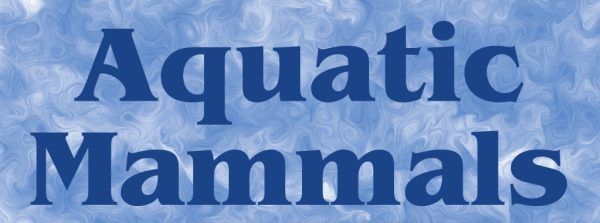Document: Article
Abstract: Respiratory flow, expired O2, and CO2 were measured during voluntary participation while spontaneously breathing in 13 confirmed healthy, male California sea lions (Zalophus californianus; body mass [Mb] range: 49 to 130 kg). Expiratory and inspiratory flow ( ,
,  ), tidal volume (VTexp and VTinsp), and breath durations (Texp, Tinsp, and Ttot) were collected on land (lying down in sternal recumbency and sitting up) and floating in water to test the hypothesis that lung function changes with body position and on land versus in water. For sea lions on land, no differences were seen in any of the lung function values when comparing lying down versus sitting up. However, when comparing animals on land versus in water, both Texp and Tinsp decreased and
), tidal volume (VTexp and VTinsp), and breath durations (Texp, Tinsp, and Ttot) were collected on land (lying down in sternal recumbency and sitting up) and floating in water to test the hypothesis that lung function changes with body position and on land versus in water. For sea lions on land, no differences were seen in any of the lung function values when comparing lying down versus sitting up. However, when comparing animals on land versus in water, both Texp and Tinsp decreased and  and
and  increased, while the VTexp and VTinsp remained the same. The resting mass-specific VT (25.1 ± 1.7 ml kg-1) in the current study was approximately 24 to 30% of the estimated total lung capacity. We also measured breath-by-breath gas uptake to determine the O2 consumption rates (
increased, while the VTexp and VTinsp remained the same. The resting mass-specific VT (25.1 ± 1.7 ml kg-1) in the current study was approximately 24 to 30% of the estimated total lung capacity. We also measured breath-by-breath gas uptake to determine the O2 consumption rates ( ) and CO2 production rates (
) and CO2 production rates ( ) during rest on land and in water. There were no differences in
) during rest on land and in water. There were no differences in  or
or  on land as compared with water, and the average estimated values were 0.58 ± 0.22 l O2 min-1 (range: 0.24 to 1.01 l O2 min−1) and 0.50 ± 0.19 l CO2 min-1 (range: 0.22 to 0.89 l CO2 min-1), respectively, which agrees with results from other studies on otariids. Additionally, the allometric mass-exponent for VT and were 1.13 to 1.20 and 0.86, respectively. These data are the first reported estimates of metabolic rate and lung function in confirmed healthy California sea lions.
on land as compared with water, and the average estimated values were 0.58 ± 0.22 l O2 min-1 (range: 0.24 to 1.01 l O2 min−1) and 0.50 ± 0.19 l CO2 min-1 (range: 0.22 to 0.89 l CO2 min-1), respectively, which agrees with results from other studies on otariids. Additionally, the allometric mass-exponent for VT and were 1.13 to 1.20 and 0.86, respectively. These data are the first reported estimates of metabolic rate and lung function in confirmed healthy California sea lions.
Key Words: tidal volume, breath duration, diving physiology, respiratory flow, pulmonary function
DOI: https://doi.org/10.1578/AM.46.1.2020.67
Page Numbers: 67-79
Open access: Click here for PDF

